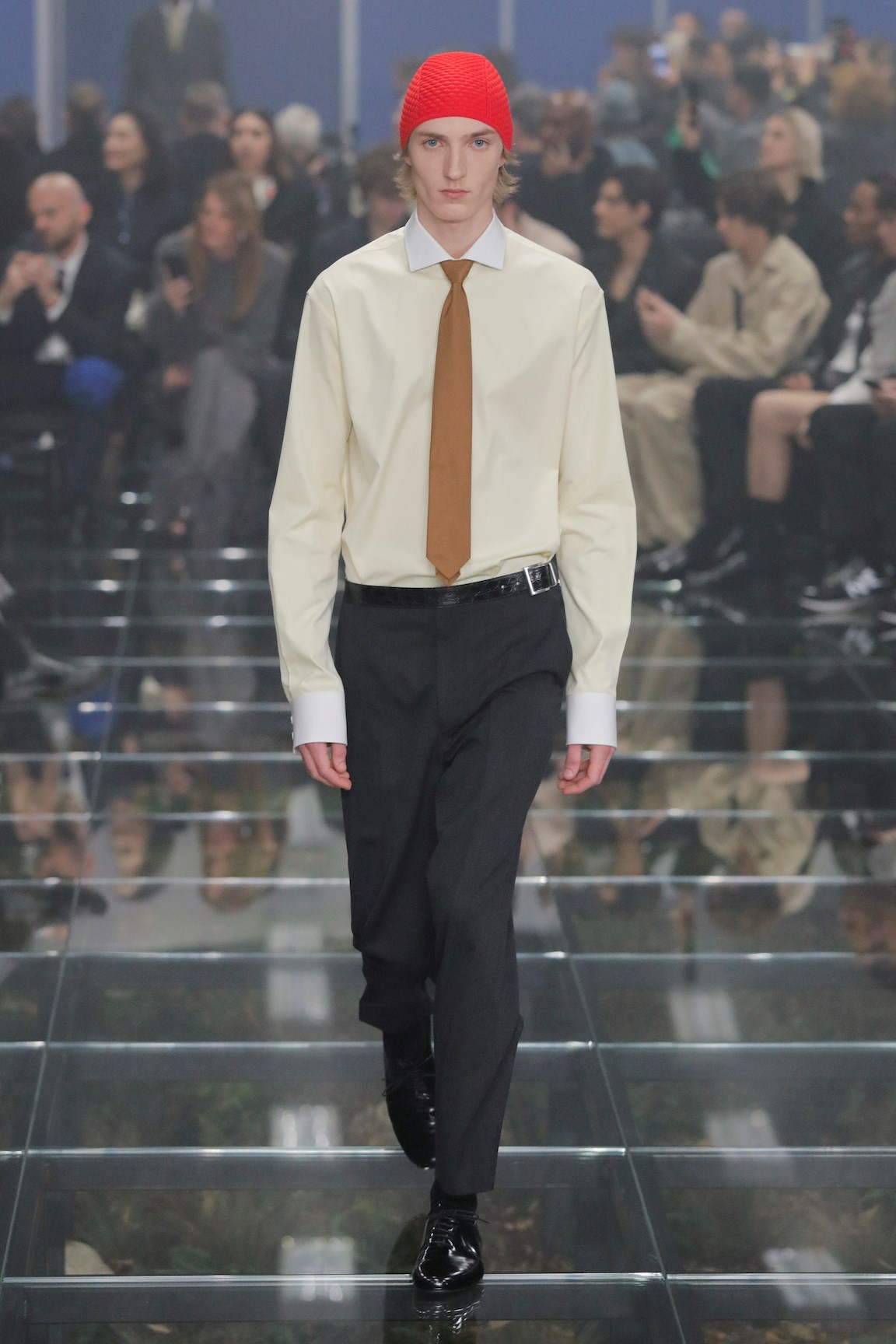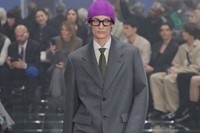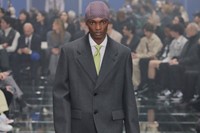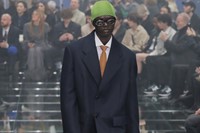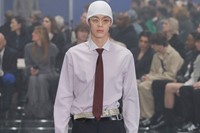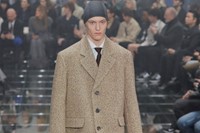Everybody Talks About the Weather. That was theme of last summer’s exhibition at the Fondazione Prada outpost in Venice – a city that often seems literally under siege from Mother Nature, flooded and sinking; an attack actually due to the affects of mankind, of course. And a preoccupation with nature – man’s relationship with it, our role as potential destroyers, implied protectors and involuntary laissez-faire custodians of the world in which we live – was at the very heart of Miuccia Prada and Raf Simons’ powerful and provocative Autumn/Winter 2024 Prada menswear show.
It was articulated from the moment you stepped into the Deposito of the Milan Fondazione – passing through a perfect, Prada-fied sterile office environment of horizon-blue cubicles and screensavers showing Shutterstock-ish images of nature, and into the astonishing verisimilitude of a recreated moorland scene. It was, actually, the same as the one on those screens, only here it was three-dimensional, a brook babbling through wild scrubland. It was untamed – no pretty flowers or trimmed hedges. True nature. Yet we weren’t in it, rather we were above it, separated by iron girders and a good inch of glass. A few feet that seemed like a chasm - nature beyond your reach. “The notion of nature as a museum piece,” said Miuccia Prada backstage. “Menacing.”
There was a menace indeed to the set, a sense of tension between the human-made and the elemental. “Office and nature, inside and out,” said Raf Simons. This idea of renewal and change – like nature, natural rhythms. This inspired the clothes.” And as the men began to file out and whizz around the space, you saw the shift in their clothes – the first look was an office drone in Oxford cotton shirt and tie, no jacket, ill-equipped to traipse through the elements. By the end, he’d been wrapped in distressed canvas workman’s jackets, in hardy tweed and woollen overcoats, cut wide and often padded to add to their heft and impact.
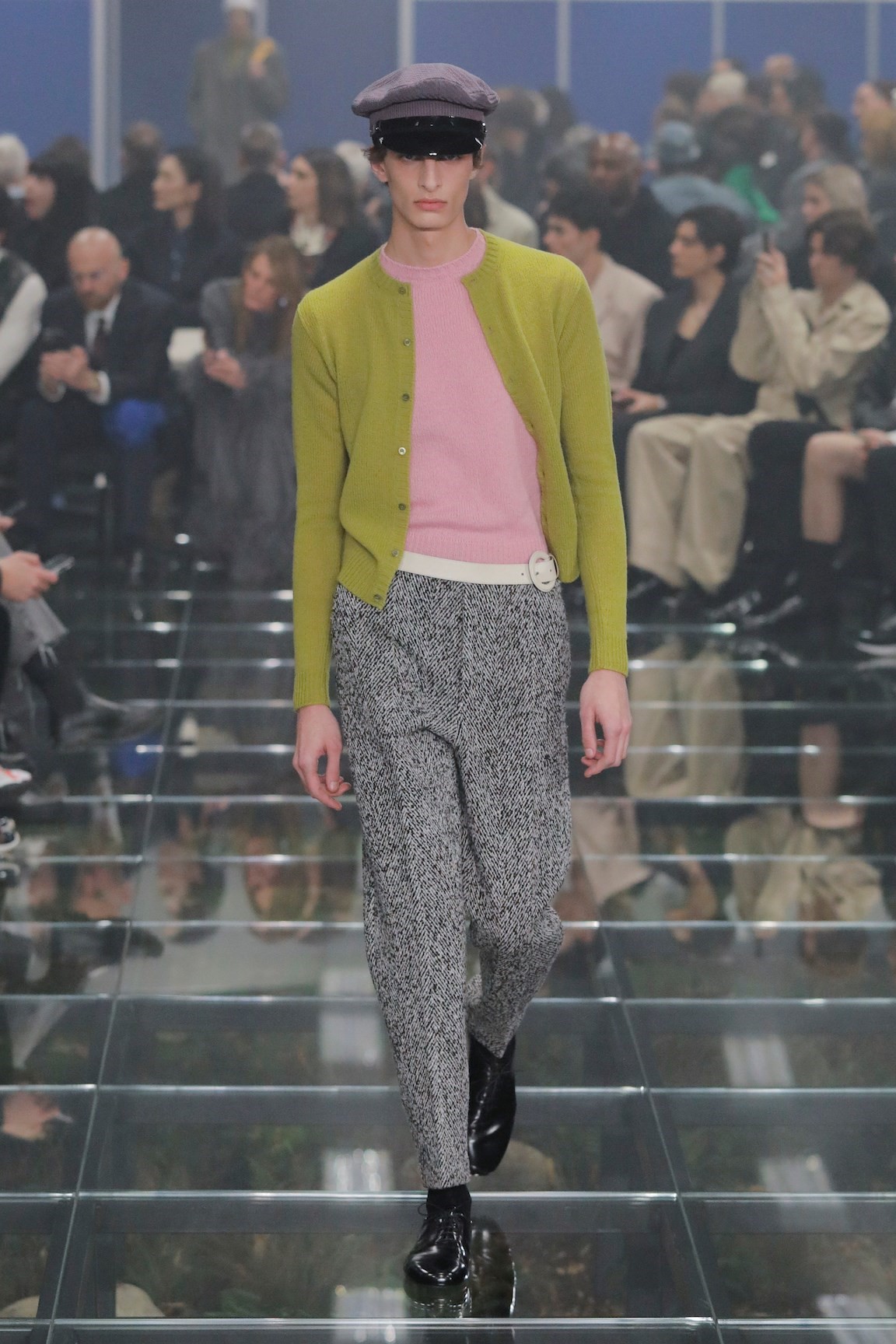
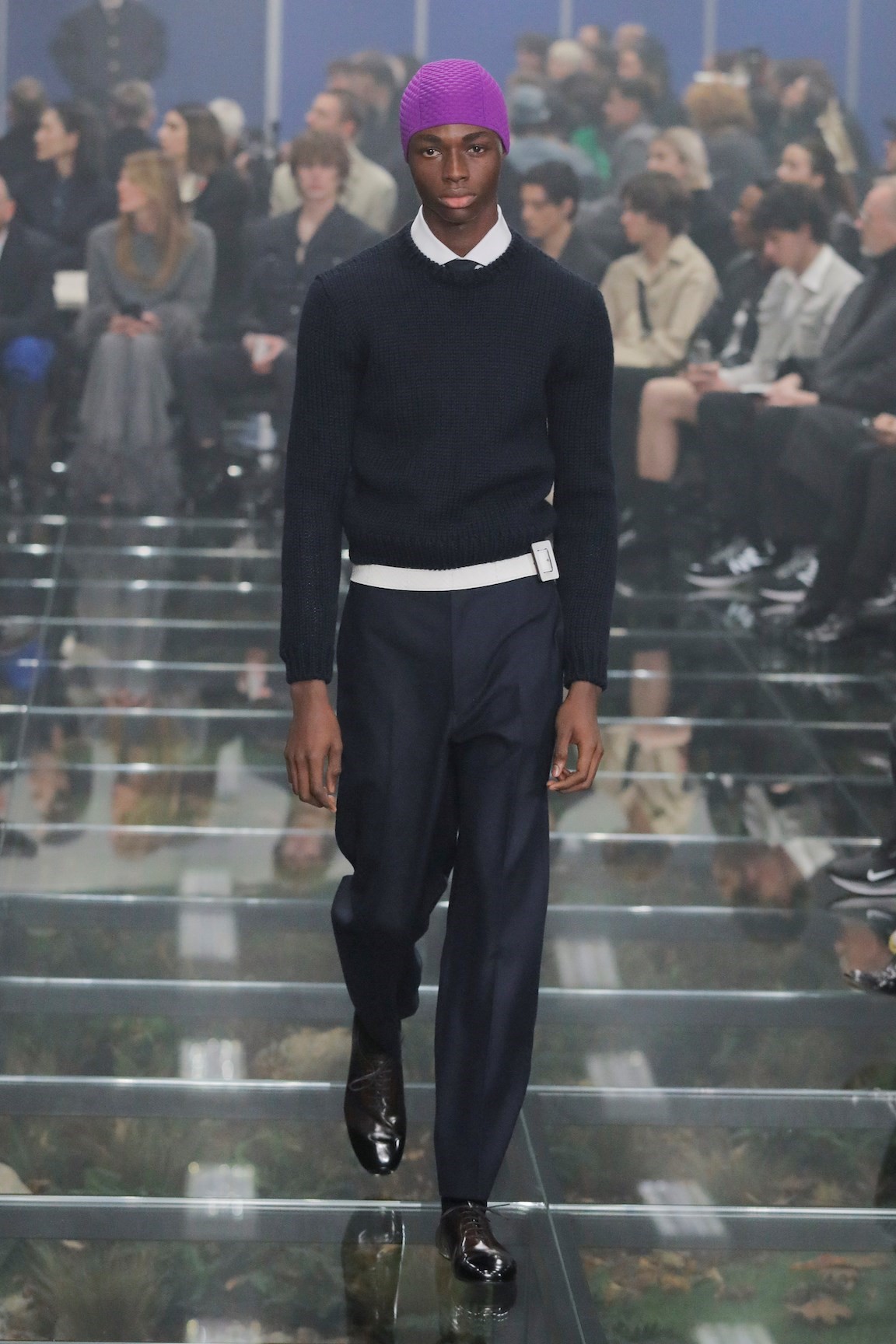
The show was titled Human Nature – which obviously has multiple meanings. It talks of the direct juxtaposition of man and environment evident in the show space, and the fact the nature we were looking at was, of course, ‘human’ nature, to say man-made. But it also talks about instinct, about spontaneous and potentially inexplicable behaviour, our codifications.
It is in Prada’s nature to question and provoke, here through mixing clothes that spoke of changing climates – as in, as you passed between the outside and in – but then also made a wider environmental comment. “There is this idea of echoing surrounding, being influenced by environments in the garments themselves,” said Simons. “The instinctive change of people shifting between these opposite spheres.” Sometimes the outfits blended the two – hardy tweeds with fine turtleneck sweaters and ski caps, overcoats atop knitted trousers like thermal underwear, albeit unprotected by anything over. And the nylon bags seemed weatherbeaten, marked by rain and wind, the passage of time.
And the weight and form of some pieces changed too – nylon was used for brass-buttoned outerwear that, usually, would have been cut in melton wool, while denim was unconventionally used for trousers shirt and tie, in a featherweight evolution.
The overall message was one of our need for nature – to determine our seasons, to house our bodies and to shape our lives, and therefore our clothes. In this context, it added up to a powerful and poignant Prada show where – as with so many things – the medium proved the most powerful message.
